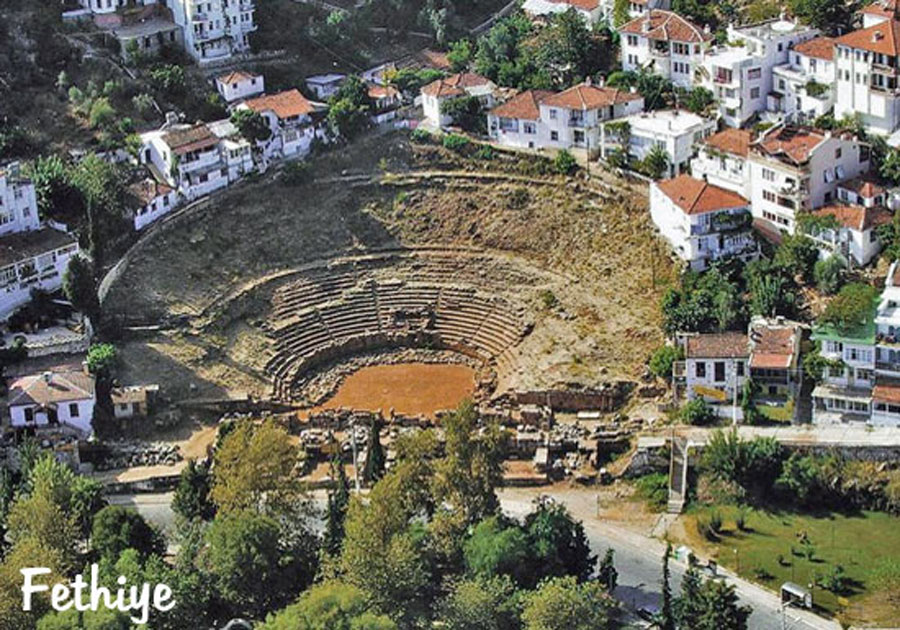 |
|
Ancient Theater in Turkey Telmessos (Fethiye) |
||||||||||||
|
|
|
|||||||||||
|
||||||||||||
|
The originally late Hellenistic theatre was built on a natural slope and was rebuilt and extended several times in Roman times. The stone stage house was built in the 2nd century AD. Today it has two tiers with a total of 28 rows of seats. The balustrade between the orchestra and the lower rows of seats, which was necessary to protect the spectators during gladiatorial and animal fights, was not added until the 3rd or 4th century AD. The theatre was probably abandoned in the 7th century A.D. and was covered by rubble over the centuries. In the years 1992 - 1995 it was largely uncovered by the Fethiye Museum. The theatre was "restored" between 2013 and 2015. |
||||||||||||
| The history of Telmessos: | ||||||||||||
|
According to a legend, the sun god Apollo himself founded the city of Telmessos, today Fethiye. According to legend, Apollo fell in love with the youngest daughter of the Phoenician king Agenor. To approach his beloved, he took the form of a small, graceful puppy. They married and a son was born, whom they named Telmessos. Apollo gave his son's name to the city he founded. The ancient Telmessos was one of the most important cities of Lycia, as it was situated on the western border of the empire, on the border of the Caribbean. Although there are no clear documents about the foundation of the city, it is assumed that the city was founded in the 5th century BC. The city came under the rule of the Persians in 547 BC and became the seat of a governor of the Persian king. In winter 344 / 343 BC Telmessos was besieged by Alexander the Great and surrendered quickly. The Romans subordinated the city to the kingdom of Pergamon in 189 BC. After its decline Telmessos was incorporated into the Lycian League. It became one of the six most important cities of the federation. Apart from numerous, mostly unnoticed smaller rock tombs and several sarcophagi, only the remains of Johanniterburg Castle and the theatre built in an early Hellenistic style have survived the times. In the old town the traditional Eski Hamam from the 16th century has been preserved. The old Eski Cami mosque, which Cezayirli Hasan had Paşa built in 1791, has also been preserved. |
||||||||||||
 |
||||||||||||
| The theatre on a postcard from the 1980s | ||||||||||||
|
|
||||||||||||
| The Theatre in September 2015 | ||||||||||||
|
|
||||||||||||
| The Theatre in September 2015 | ||||||||||||
|
|
||||||||||||
| April 2013, rainy day | ||||||||||||
|
|
||||||||||||
| April 2013, rainy day | ||||||||||||
|
|
||||||||||||
| The stage house as it had survived the times until 2014 | ||||||||||||
| Photos: @chim | ||||||||||||
| Translation aid: www.DeepL.com/Translator | ||||||||||||
| Source: Wikipedia and others | ||||||||||||
|
|
||||||||||||

